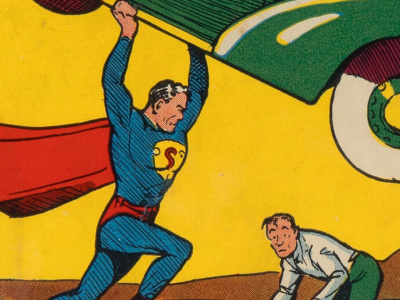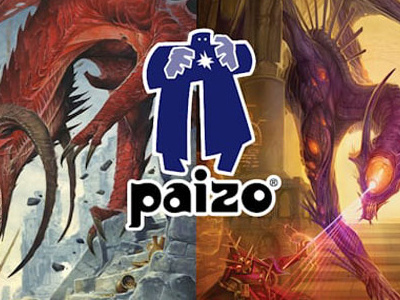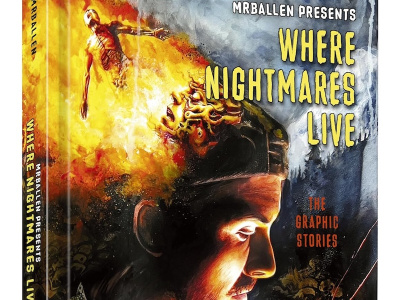
'I Think I Can Manage' is a regular column by retailer Steven Bates, manager of Bookery Fantasy, a million dollar retail operation in Fairborn, Ohio. Today's column is the second of two on maximizing sales during the holiday season, this one concentrating on merchandising. The first column on holiday retailing was on advertising (see 'I Think I Can Manage -- Tis the Season for Ads').
Last time up, I discussed 'Black Friday' and the sluggish start of the holiday shopping season. Big box retailers reported miserable opening day numbers; specialty retailers almost certainly did just as badly, if not worse. In Part One, I suggested a few strategies for advertising and promoting your business during the holiday season, some traditional, others a bit more 'guerilla' in nature, but all of them have possibilities for attracting both old and new customers into your shops. In Part Two, I'll address some of the things you can do to convert casual browsers into cash-ual buyers.
Before making any decisions, displays, or declarations about discounts, consider which is more important to you in your fourth quarter, profits or cash flow? Businesses often confuse the two, and, to be sure, there is some overlap. But many retailers who are reporting big sales numbers this year are doing so at the expense of profits. Deep discounts or minimal mark-ups are attractive to consumers, and can pry open those pocketbooks and wallets faster than anything, but are they worth it? The debate boils down to simple math, but bottom line, you need to decide which is best for your situation. Sticking to suggested retail, guide price, or keystone mark-ups will ensure that you will make your margins on whatever you sell. The dilemma is, will you sell enough? Markdowns, coupons, sales, and clearance prices will entice your customers to buy more and possibly attract new patrons, which will generate cash flow at the expense of potential and actual profits.
For example, say you're selling a new game for $30. Chances are you paid $18 or so wholesale for it. Let's say you have five in stock, so you're already down $90. Maybe you sell one at $30 prior to the holidays, putting you a mere $60 in the hole. You set up a sale table, and mark three of the remaining four at 33% off, or $20 each. If all three sell, you reach a break-even point, and still have one copy left for a potential future customer. So you've gone from $90 in the red to where? Instead of selling five games at $30 each, and realizing a $60 profit, you've simply made back your initial investment. Zero profits, but enough cash flow to cover the cost of the product. Of course, the scenario can play out with numerous twists and turns, resulting in greater or lesser sales, but you get the gist. Multiply that process a hundredfold, and you begin to see the appeal of the temporary price reduction. (The operative phrase in the previous sentence should be 'temporary.' Too many comics and games stores have run themselves out of business, thinking that they'd prosper by discounting everything everyday to lure customers away from their competitors. That might work for Wal-Mart, but in 'Mom & Pop' businesses, it's a recipe for failure.)
Don't push just your junk. Sales that concentrate only on leftover merchandise are not as alluring as a sale on the 'good stuff.' Sure, major retailers do this all the time, closing out last season's clothing lines or moving last year's model off the lot (which explains quite a bit about the car I drive and my sense of 'fashion'). But during the holiday season, people are shopping for bargains on better items, things that are hip, happening, and hot. Your customers will be no different. If you truly want to generate some cash flow, don't be afraid to sacrifice a few cash cows. This year, we set up a 50% off table in the center of our New Comics section, piled high with action figures, graphic novels, statues, and other goodies. Sure, some of it is older, less popular merchandise, but it's interspersed with newer, higher-demand items. Trendier merchandise will catch the customers' eye quicker, and hopefully draw their attention to more misfit toys and books.
'Bundling' is a good way to move merchandise and not cut as deeply into profits. Several times in the past, we've offered free tee-shirts with a purchase of a certain dollar amount, usually around $50. The customer perceived this as a $15-20 rebate, depending on the shirt's sticker price; we focused more on the shirt's wholesale value (around $10), essentially a 20% 'discount' that generated higher sales, as people bought more to reach the 'magic number' for a free shirt.
We utilize a similar concept year round in our Gaming Store, offering stamps on a rebate card with every $20 purchase. Once the customer reaches ten stamps ($200 or more in purchases), they get $30 in free gaming merchandise from open stock. Customers will buy extra dice, paints, modules, or booster packs, just to reach the $20 mark and get a stamp on their card. Customers rarely spend exactly $20, and over the course of ten purchases might actually buy $250-300 worth of goods before earning their free $30 in merchandise. This reduces the 'discount' from the apparent 15% to a more profitable (for us) level, often below 10%, but nobody complains as they're grabbing their free $30 in stuff.
I recommend bringing in Santa Claus or other seasonal characters, if only to draw in more families. If our community's reaction to Free Comic Book Day is any indication, there are still a lot of people out there with misconceptions about comics and the stores that sell them (and, at least locally, I still hear about the demonic influence of Dungeons and Dragons). Hosting St. Nick, Rudolph, Frosty, or some other holiday favorite is a good way to sugarcoat your image with the public. Tie the appearance to a food or toy drive, or some more personal charity, and you might even get some free publicity from your local media.







